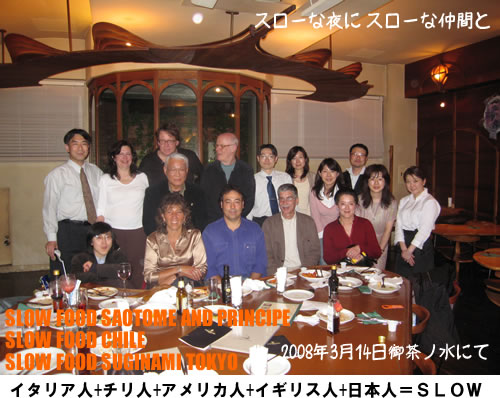
ĄĄ„č„íĄŒ„ŐĄŒ„ɀ耟€Ê€ßŁÔŁÏŁËŁÙŁÏ€ÎșŁČó€Îœž€Ț€ê€ÏĄąËÜĆö€Ë¶öÁł€Ê„Ż„é„Š„Ç„Ł„Ș€”€ó€«€é€Î„áĄŒ„뀫€é»Ï€Ț€ê€Ț€·€żĄŁ€œ€·€ÆĄą€Ț€ż¶öÁł€Ë„č„íĄŒ„ŐĄŒ„É„Á„ꀫ€é€â€Œ€ÒĆì”ț€ËčÔ€Ż€Î€Ç€ȘČń€€€·€ż€€€È€€€Š„áĄŒ„뀏ÆÏ€€Ț€·€żĄŁ
¶öÁł€Ź¶öÁł€ò±ż€ó€ÇĄą€ł€ó€Ê€ËÁÇĆš€Ê»țŽÖ€òČဎ€č€ł€È€Ź€Ç€€Ț€·€żĄŁ
ËÜĆö€Ë€ą€ê€Ź€È€Š€Ž€¶€€€Ț€·€żĄŁ
„Ż„é„Š„Ç„Ł„Ș€”€ó€ŹĄą„€„ż„ê„ążÍ€Ç€ą€êĄą€Ò€È€Ä€Î„łĄŒ„ÒĄŒÆŠ€ÎÌÚ€«€éĄą„Ę„ë„È„Ź„ëżÍ€Î±üÍÍ€ÈĂ΀êčç€Ă€Æ€Ž·ëș§€”€ì€ż„š„Ô„œĄŒ„ɀ䥹€œ€Î„é„Ö„í„Ț„ó„č€òÄÌÌő€·€Æ€Ż€À€”€Ă€żÌÚÎÓ€”€ó€Ź€Ț€żÁÇĆš€ÊÄÌÌő€ÇĄą€È€Æ€â°őŸĘ€Ë»Ä€ê€Ț€·€żĄŁ
„č„íĄŒ„ŐĄŒ„É„Á„ê€Î€ȘÆóżÍ€âĄą€È€Æ€âÌÀ€ë€Ż€ÆĄąČńŸì€ËŸđÇź€ÎÂÀÍÛ€Ź€€ż€è€Š€Ç€·€żĄŁÀž€Ț€ì€Æœé€á€Æž«€ëÌŁ€ï€Š„Ú„Ă„ŃĄŒ€ÎżôĄč€ŹłÚ€·€«€Ă€ż€Ç€·€żĄŁĄÊ„é„Æ„ó€ÎČ»łÚ€ŹÎź€ì€Æ€€€ë€è€Š€Ç€·€żĄŁĄË
Ăæß·€”€ó€Î„łĄŒ„ÒĄŒ€Î€ȘÏĂ€ŹĄąĂÙ€Ż¶î€±€Ä€±€ż€â€Î€ÇĄą»Ç€š€ș€Ë»ÄÇ°€Ç€·€żĄŁ
€”€”€ä€«€Ç€â°ìœï€Î„ÆĄŒ„Ö„ë€ò°Ï€ß€Ê€Ź€éĄą€œ€Îż©șà€Î„š„Ô„œĄŒ„ÉĄą„ëĄŒ„Āʀɀ΀ȘÏĂ€ò»Ç€€ĄąÌŁ€ï€€Ąą€œ€·€Æ€È€â€Ëžì€ëĄŁœé€á€ÆÌŁ€ï€ŠżôĄč€ÎÌŁ€ò»ČČĂŒÔ€ß€ó€Ê€ÇÊŹ€«€Áč瀊”€»ę€Á€ŹÂçÀÚ€À€ÈĄą„č„íĄŒ„ŐĄŒ„ɀ耟€Ê€ßŁÔŁÏŁËŁÙŁÏ€ÏčÍ€š€Ț€čĄŁ
Ăæ±ûÀț€Ë€ÏĂæ±ûÀțÊžČœ€È€€€ŠÆÈÆĂ€Ê„č„ż„€„뀏€ą€ê€Ț€čĄŁ
șǶá€Ç€ÏĄąÆĂ€ËœśÀÌĄČ耫€éÈŻżź€”€ì€żĄÖ„Ï„Á„߄ĀȄŻ„íĄŒ„ĐĄŒĄŚ±©ł€Ìî„Á„«
Ąą€œ€ì€«€é€ł€Îœ©±ÇČè€Ç€âžűł«€”€ì€ëĄÖ„°ĄŒ„°ĄŒ€À€Ă€Æǀǀą€ëĄŚÂçĆç”Ę»ÒșîÉÊ€âĂæ±ûÀț€ŹÉńÂæĄŁÈóŸï€ËÉę耯°Š€”€ì€ëĂæ±ûÀț€Î„é„€„Ő„č„ż„€„ë€ÏĄąĂæÌî„Ö„íĄŒ„É„Š„§„€€ò€Ï€ž€áżùÊ€ÎĂÏŸì»ș¶È€Ç€ą€ë„ą„Ë„áĄąÌĄČ耫€éÂż€Ż€ÎÊžČœżÍ€âĂÂÀž€·€Æ€€€Ț€čĄŁ
€œ€ó€Ê„č„ż„€„ë€òÂçÀڀˀ·€Ê€Ź€éĄą„č„íĄŒ„ŐĄŒ„ɀ耟€Ê€ßTOKYO€é€·€€Ąą€€€«€Ë€âĂæ±ûÀțĆȘ€ÊżŽ€Ź€Û€Ă€ł€ê€ÈČ耫€Ż€Ê€ëłèÆ°€ò€ł€ì€«€é€âÂł€±€Æ»Č€ê€ż€€€È»Ś€€€Ț€čĄŁ
€ł€ì€«€é€â€É€Š€Ÿ”耷€Ż€ȘŽê€€€·€ż€·€Ț€čĄŁ
ĄĄ


A letter from Claudio Corallo
Dear chocolate and coffee lovers,
I thought you might be interested to know a little about my experiences,which
are what make my chocolate and coffee what they are today. IĄÇveworked for more
than 32 years to get here, so it isnĄÇt easy to put all of that into just a few
words. Perhaps the best way to describe my work, withboth the cocoa and the coffee,
is an approach not unlike the care that aproducer of fine wine gives to his vines
and his oak barrels. Through allĄĄmy experiences with coffee and cocoa I always
strive to be completelyĄĄintegrated, seeking only to enhance, and not harm the
local environment ofthe people with whom I work.
My name is Claudio Corallo.
I graduated from the Instituto Agronomico perĄĄlĄÇOltremare in Florence, Italy.
In 1974 I went to Zaire (the former Belgian Congo, now the Democratic Republic
of Congo) on a socio-agricultural aidĄĄproject. I left after one year, but I stayed
on in Zaire. For the next
twoyears I bought, transformed and exported coffee,
but I found that theĄĄtrading world was not for me. Nevertheless, I became fascinated
by theĄĄenormous differences in taste and smell of the coffee, even when they camefrom
the same variety. I then decided to devote myself to producing
coffee.
In
1979 I managed to buy two old plantations that were practically abandonedĄĄin the
center of Zaire. These early years confirmed what IĄÇd alwaysĄĄbelieved, which is
that teamwork was the way to the very best results. IĄĄbuilt a team, and as we
worked on an old variety of robusta coffee
(canephora) our enthusiasm grew
and grew. The coffee became so sweet thatmany experts couldnĄÇt believe it was
from that species.
We were
completely isolated on the plantations in the rainforest, at thegeographic center
of the gigantic country that is the Congo. We were oftenĄĄvisited by elephants,
leopards and wild buffaloes. At first we built a smallĄĄlanding strip, but because
of the many air crashes in the country andĄĄsoaring fuel costs, I soon began to
travel by river. Every round tripĄĄbetween the plantation and Kinshasa was 3,200
kms. (2,000 miles) in aĄĄmotorized pirogue. Part of the trip was down the rivers
that Joseph
ConradĄĄdescribed in his Heart of Darkness, but there was also
a long stretch fromthe main rivers of ever smaller serpentine streams, completely
covered bythe equatorial rainforest canopy.
In 1983 from a trip to the small African island country of Sao Tome eĄĄPrincipe,
my wife brought back some amazing samples of cocoa and coffee. Wefell in love
with them to such an extent that we decided that we must go tothe archipelago
at the first opportunity. When civil wars took hold ofĄĄZaire, in 1993 I decided
to move my family (wife Bettina and childrenĄĄRicciarda and Niccolo who were born
while we were in Zaire) to Sao Tome eĄĄPrincipe (where our third child, Amedeo,
was later born), going back and
forth until 1997 when I joined them for good.
During all this time I wasĄĄsearching for the same plants that my wife had first
brought to Zaire.
I finally
found them on the island of Principe, where history tells us thatin 1819 the Portuguese
first introduced cocoa plants to Africa, bringingĄĄthem from the Bahia region of
Brazil. These original plants, from an oldĄĄabandoned plantation which had been
swallowed up by the rain forest,survived thanks to the monkeys whose innate taste
for the best cocoa ledĄĄthem to spread these seeds throughout the rainforest, where
the plantsĄĄreproduced spontaneously. I then took on this abandoned plantation,
Terreiro Velho.
Just as
I had done in Zaire I began the arduous work of recovering andselected the best
plants, now helped by more than 20 years of experience on the ground. At first
we lived in a small log cabin on the beach, next to a tiny fresh water stream.
It was extremely humid, but we were happyĄĄsurrounded by the cocoa plants that
we had searched so long to find, though when it rained the tropical downpours
on the zinc roof rendered allĄĄconversation impossible. Over the years with great
care we perfected
controlled fermentation and drying methods that exalted
the qualities ofĄĄthis extraordinary cocoa.
All this time I had been searching
for original coffee plants too andĄĄfinally found them in a rock pile where previous
passes by a tractor yanking out old plants had somehow missed them. There was
a small stand of anĄĄancient variety or arabica coffee that interested me. Thus,
in1998 I started working on another abandoned plantation called Nova Moca, on
the otherĄĄisland that makes up the country, Sao Tome. To halt erosion on the sloping
land we built terraces with small rock walls. The coffee trees producedĄĄalmost
nothing at first, victims of the whims of the seasons. But this
was an arabica
with more body that any I had ever found in all my life, a dream.
We drank it constantly as we worked on it, mixing it with tests of the cocoa beans
we were also working on across the water in Principe. My son Niccolo,who was then
14, doesnĄÇt drink coffee, but he would always pop in to eatĄĄsome beans, accompanied
by a few pieces of chocolate, make a few
comments,and disappear again.
I fondly remember us at the end of the work day, as the sun set, gathering in
the small chocolate ĄÈfactoryĄÉ we had set up on our plantation inPrincipe. We would
taste the results from the dayĄÇs tests of differentĄĄproduction methods, choosing
our favorites. Sometimes we would melt theĄĄchocolate and drink it, almost entering
into a frenzy.
There we were, tasting and trying long into the night.
My very best wishes,
Claudio Corallo
ĄĄ
ĄĄ